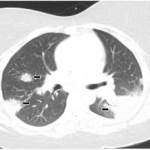If the diagnosis is clearly established and still refractory to treatment, options include cyclophosphamide, rituximab, tocilizumab or tofacitinib, but the data for these agents are of even poorer quality.
Tapering Medications
Dr. Syed shared that although many patients would like to taper off their medications, little is known about the best ways to do this. She noted that some cases of sarcoidosis do go into remission, but more is known about this in the pulmonary setting than in sarcoidosis with other types of organ involvement.
“When it comes to neurosarcoidosis, I think overall we’re probably just more nervous to taper these drugs off,” Dr. Syed said.
True relapse rates are unclear, but may be high, even when medications are tapered and not stopped suddenly. “If you do decide to taper a medication, consider closely monitoring symptoms and employing imaging while you slowly taper,” said Dr. Syed. “And consider continuation of at least methotrexate or another oral steroid-sparing agent.”
Dr. Agnihotri added that cranial neuropathy manifestations of neurosarcoidosis can sometimes be monophasic and self-limiting, so some patients may not require long-term treatment.
Collaborative Care
Dr. Syed also highlighted the importance of collaborative care for sarcoidosis, as specialists from neurology, ophthalmology, pulmonary, cardiology, rheumatology and other disciplines may need to coordinate both initial diagnostic evaluation and ongoing care.
Although not every patient can be seen in a dedicated sarcoidosis center, Dr. Syed touted their benefits. Such clinics allow patients to see multiple providers and get much of their lab work and imaging done in a single day, and the close collaborative contact also benefits and informs providers. Such centers are well situated to advance high quality patient-centered care and also provide important avenues for research, teaching and community outreach.5
“Multi-disciplinary clinics can really help improve the efficiency of patient care while increasing communication between providers,” Dr. Syed concluded.
 Ruth Jessen Hickman, MD, a graduate of the Indiana University School of Medicine, is a medical and science writer in Bloomington, Ind.
Ruth Jessen Hickman, MD, a graduate of the Indiana University School of Medicine, is a medical and science writer in Bloomington, Ind.
References
- Joubert B, Chapelon-Abric C, Biard L, et al. Association of prognostic factors and immunosuppressive treatment with long-term outcomes in neurosarcoidosis. JAMA Neurol. 2017 Nov 1;74(11):1336–1344.
- Fritz D, van de Beek D, Brouwer MC. Clinical features, treatment and outcome in neurosarcoidosis: Systematic review and meta-analysis. BMC Neurol. 2016 Nov 15;16(1):220.
- Stern BJ, Royal W III, Gelfand JM, et al. Definition and consensus diagnostic criteria for neurosarcoidosis from the Neurosarcoidosis Consortium Consensus Group. JAMA Neurol. 2018 Dec 1;75(12):1546–1553.
- Baughman RP, Valeyre D, Korsten P, et al. ERS clinical practice guidelines on treatment of sarcoidosis. Eur Respir J. 2021 Dec 16;58(6):2004079.
- Kron J, Syed A, Iden T, et al. Tackling health care disparities: How to build a sarcoidosis center. Sarcoidosis Vasc Diffuse Lung Dis. 2022;39(3):e2022024.


